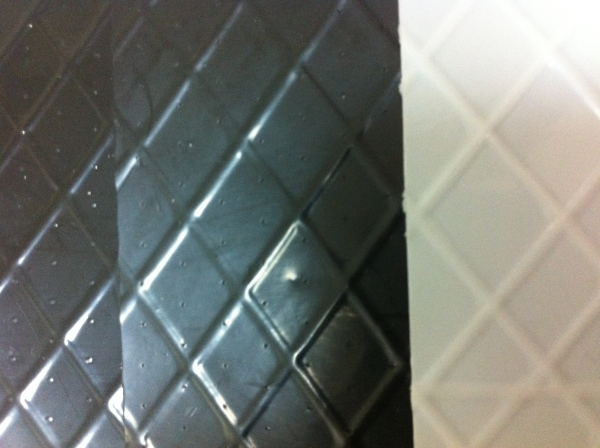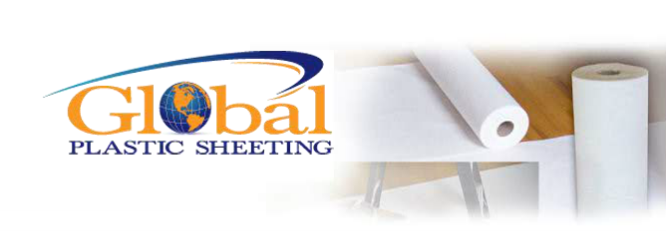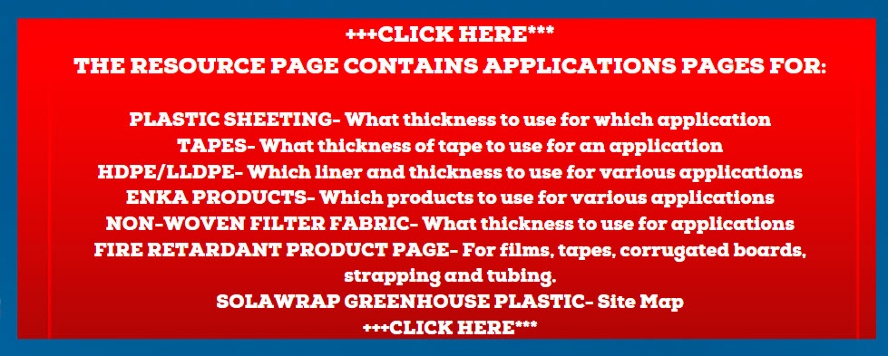HDPE vs LDPE- What's the difference
Question: What is the difference between HDPE (High Density Polyethylene) and LDPE (Low Density Polyethylene?
Answer: HDPE or High Density Polyethylene has a greater mass density than that of Low-density polyethylene. HDPE has little "branching", giving it stronger intermolecular forces and tensile strength than LDPE. It is also harder and more opaque and can withstand somewhat higher temperatures. HDPE helps protect the environment from harsh chemicals and oils that could otherwise pollute the ground if an HDPE liner/ geomembrane is mot present. HDPE forms a chemical resistant barrier.
Scrim used in Poly Scrim- what is it?
Question: Skrim scrim is used in poly film and sheeting. What is "skrim/scrim" and why is it used?

Answer: The scrim used in the Poly Scrim line is a polyester string that is placed between 2 sheets of polyethylene to reinforce the plastic. Polyester Scrim is used because it is very strong, and durable. It is the perfect solution when you want to stop a tear that can occur in poly films
How is the density of Polyethylene measured?
The density of polyethylene is measured in a column of water, and they are all classified depending on ranges of density. LDPE (and LLDPE) are generally within the range of 0.919-0.924 g/cm³. MDPE are generally within the range of 0.926-0.940 g/cm³. HDPE are generally within the range of 0.941-0.965 g/cm³. These numbers can vary slightly depending on your source, and are not set in stone, just general guidelines.
Can Plastic Sheeting Be Recycled?
Question: Can Plastic Sheeting be recycled?


Answer: A resounding YES, Plastic Sheeting (polyethylene film) can be recycled! Many of Global Plastic Sheeting products are recyclable. The polyethylene sheeting films (LDPE, LLDPE) fall under the category of recycle #4. The exception is for the DuraSkrim, Poly Scrim, Padded, Absorb and Vapor Escape Plastic, and the Pyrotarp materials. The HDPE liners fall into category #2 for recycling. Some of our product are already manufactured with reprocessed resins, such as Rufco 1010, 2010, 3010, 4010. The are environmentally friendly.
.
Will Plastic Sheeting hold up for a screened in patio?
Question: I have a screened in patio with homemade inserts covered with plastic sheeting that are put up in the winter (my mother’s place in Ohio). All this was done over 15 years ago. Within the last couple of years the plastic sheeting has begun to disintegrate. I tried replacing it with 6 mil plastic from a home improvement store, but that disintegrated within a year. Do you have something that will last longer than the plastic from the home improvement store?
Answer: Absolutely we can help you. If you are looking for a plastic you can see through then you can use a marine grade vinyl product. If you prefer it to be opaque, the you can use a reinforced white plastic. Click here to learn more.








